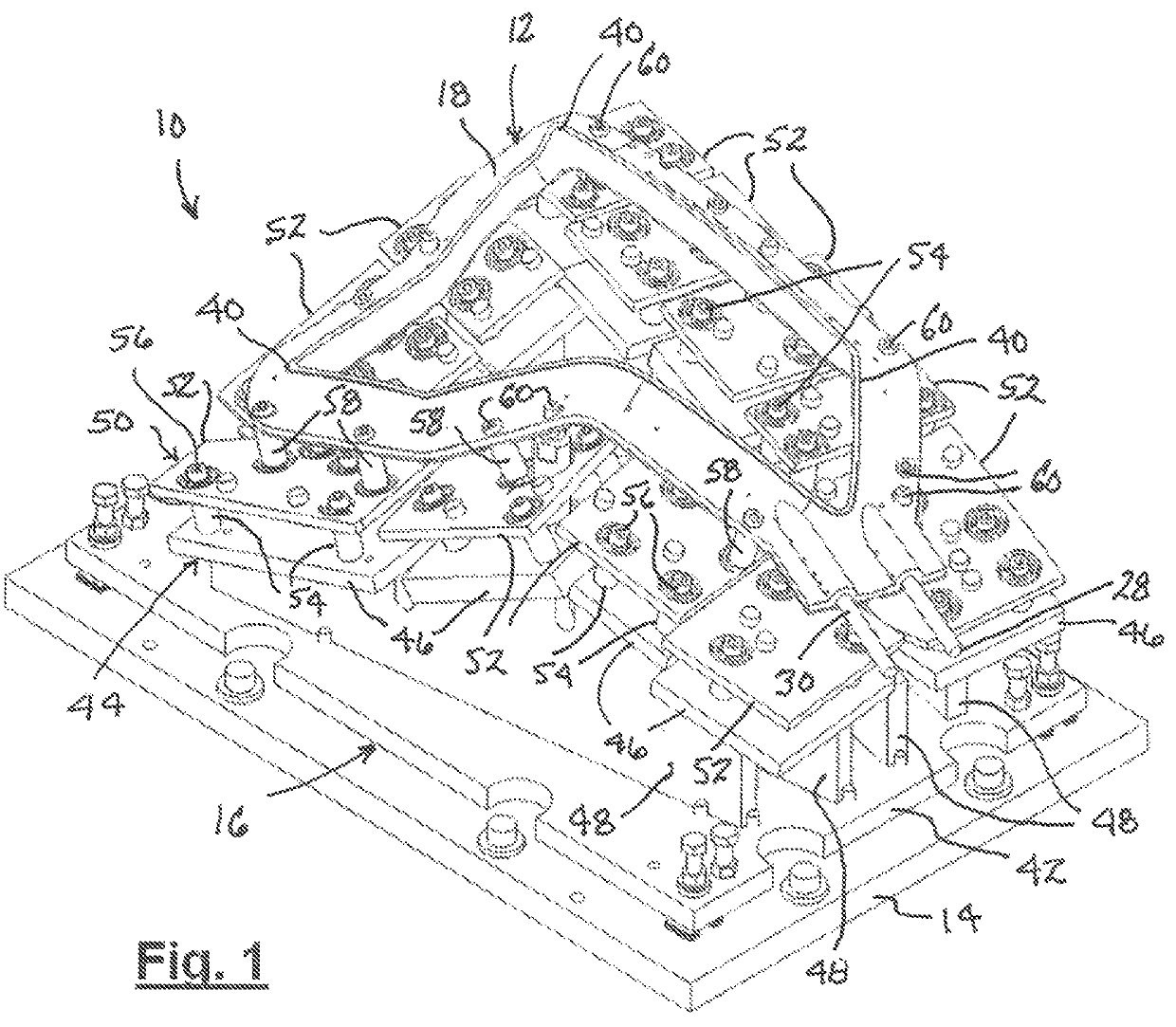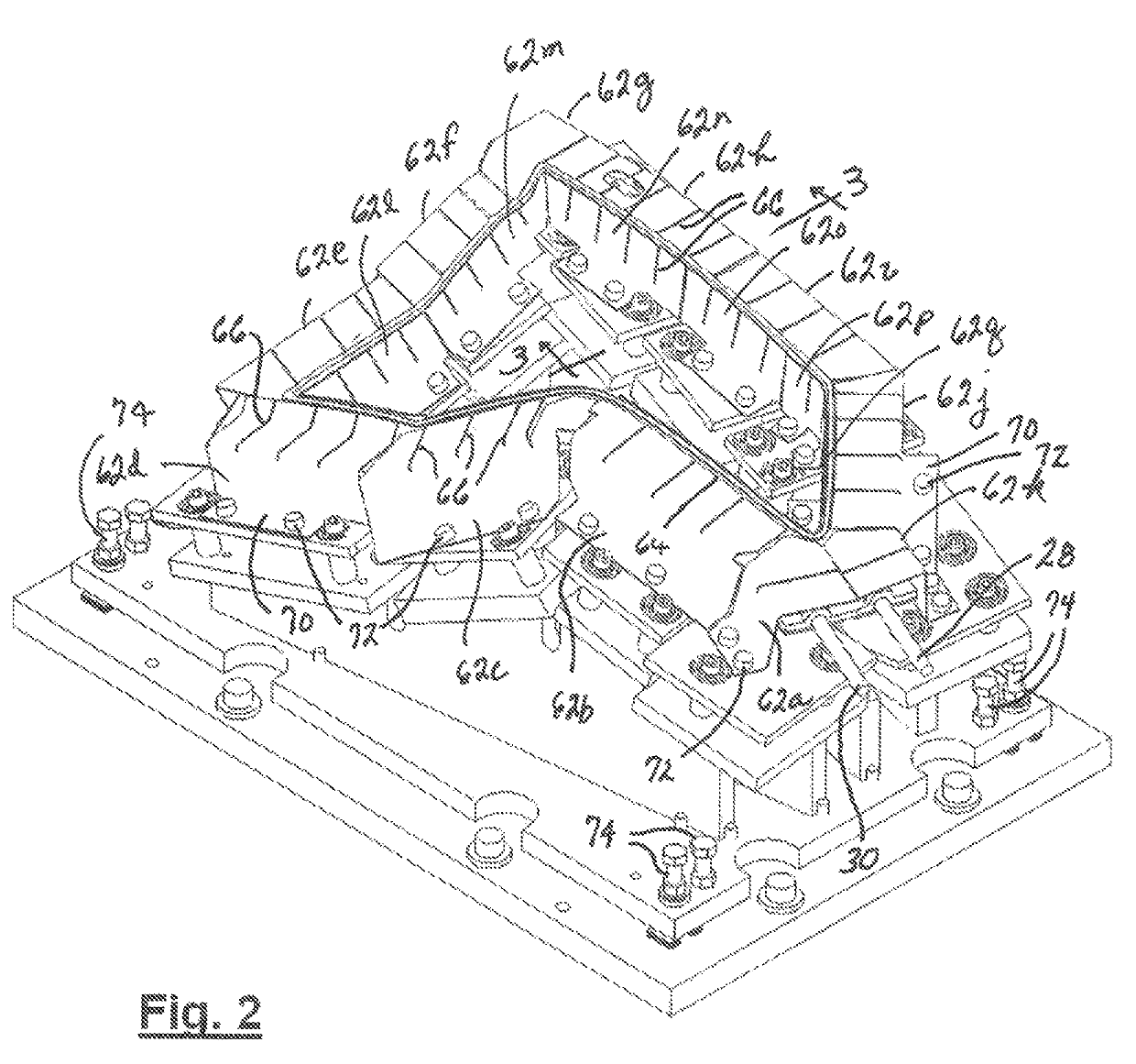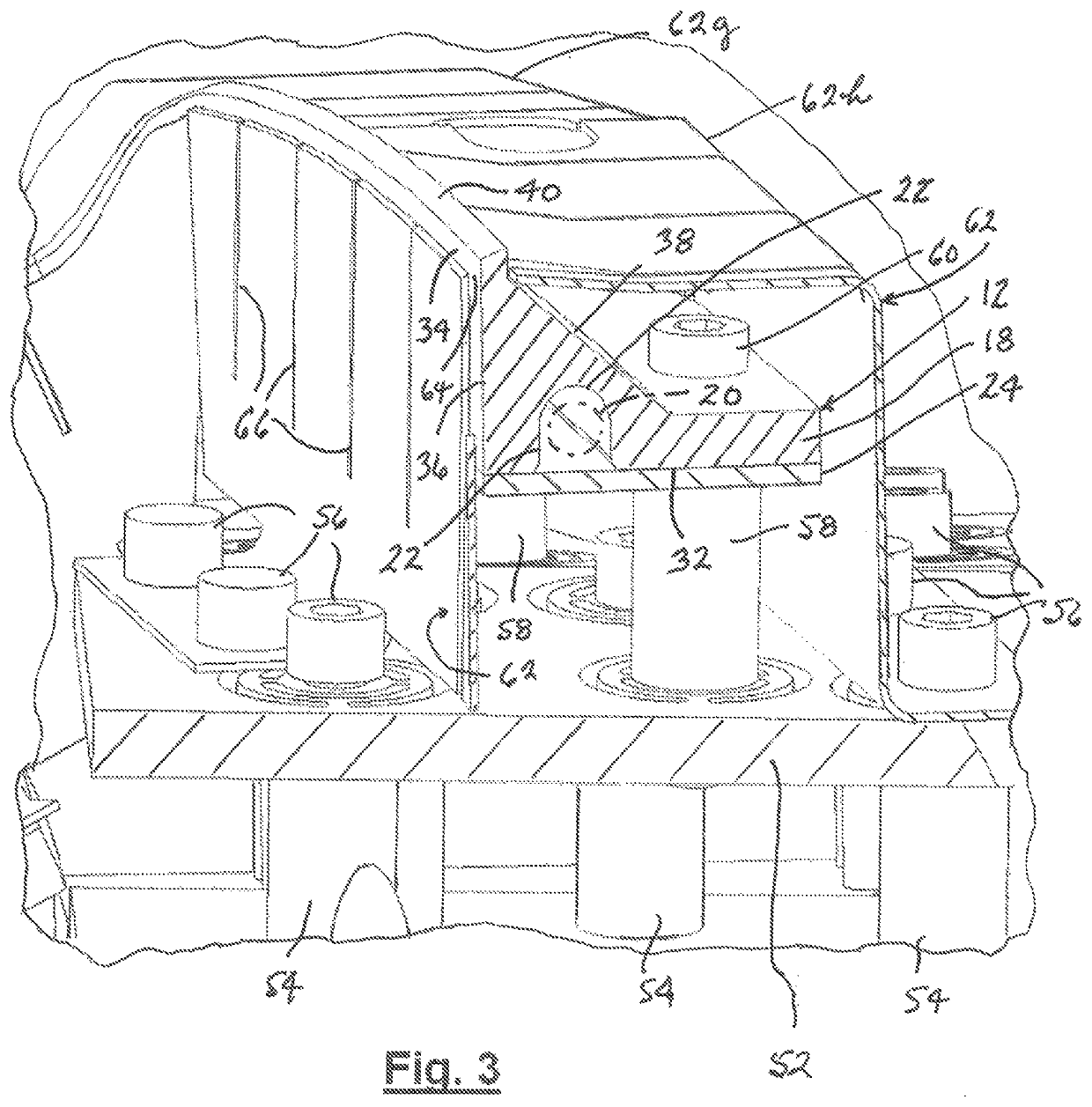Limiting dispersion of IR radiation from a heater element during plastic welding
a technology of limiting ir radiation and heater element, which is applied in the direction of distortion, discoloration, and other parts, which can solve the problems of plastic parts being other parts may be affected in undesired ways, so as to increase the operating efficiency of heating tools.
- Summary
- Abstract
- Description
- Claims
- Application Information
AI Technical Summary
Benefits of technology
Problems solved by technology
Method used
Image
Examples
Embodiment Construction
[0024]FIG. 1 shows a heating tool 10 for performing an operation on a plastic part (not shown) to melt plastic at a location where a weld joint is to be created. Tool 10 comprises, as its heater element, a hot plate assembly 12 which is supported on a tooling plate 14 by a support structure 16.
[0025]Hot plate assembly 12 comprises a hot plate which has a thermally conductive body 18 whose shape has a feature which corresponds to that of a surface of a plastic part at a location where a weld joint is to be created. FIGS. 3 and 4 show hot plate assembly 12 to further comprise an electric heater 20 (shown in phantom) which is disposed within a channel 22 in body 18 and captured within channel 22 by a retainer plate 24 fastened to body 18. An example of heater 20 is a conventional flex heater pressed against body 18 by fastening of retainer plate 24 to body 18. FIG. 1 shows electrical leads 28, 30 of heater 20 extend outward from body 18 for connection to an electric power source (not s...
PUM
| Property | Measurement | Unit |
|---|---|---|
| emissivity | aaaaa | aaaaa |
| emissivity | aaaaa | aaaaa |
| emissivity | aaaaa | aaaaa |
Abstract
Description
Claims
Application Information
 Login to View More
Login to View More - R&D
- Intellectual Property
- Life Sciences
- Materials
- Tech Scout
- Unparalleled Data Quality
- Higher Quality Content
- 60% Fewer Hallucinations
Browse by: Latest US Patents, China's latest patents, Technical Efficacy Thesaurus, Application Domain, Technology Topic, Popular Technical Reports.
© 2025 PatSnap. All rights reserved.Legal|Privacy policy|Modern Slavery Act Transparency Statement|Sitemap|About US| Contact US: help@patsnap.com



